You can trust Cyclingnews
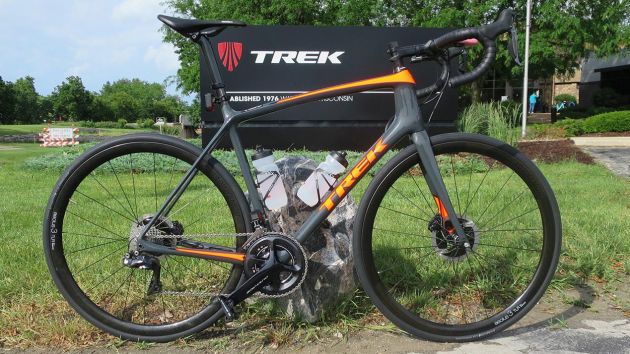
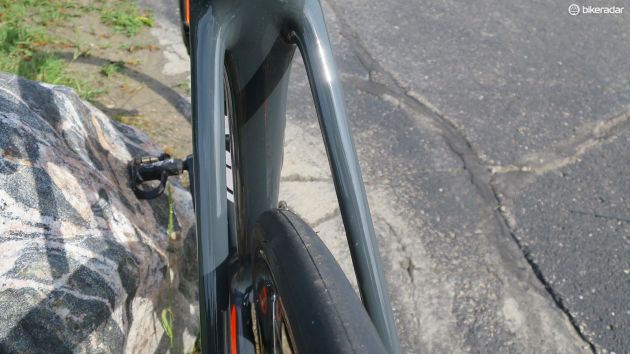
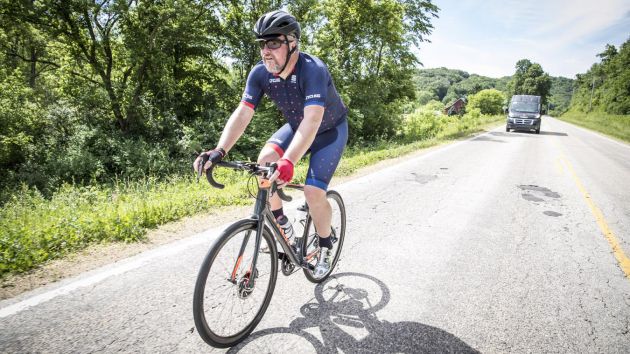
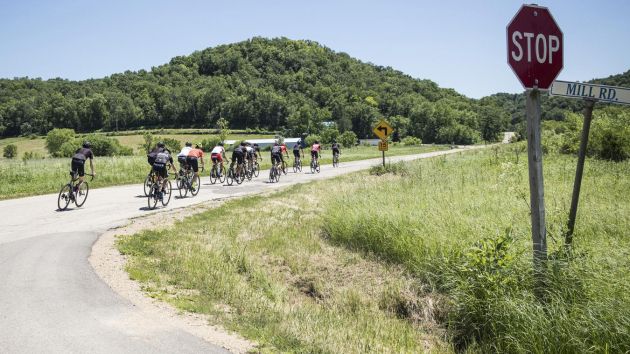
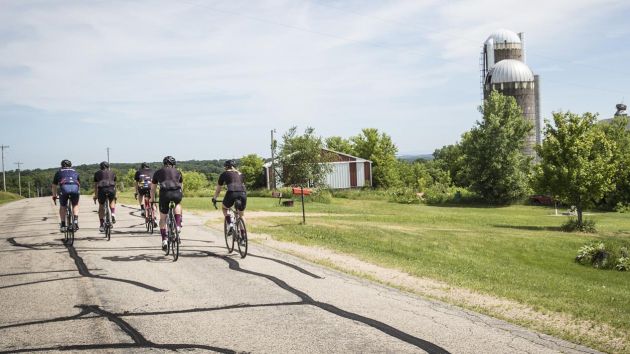
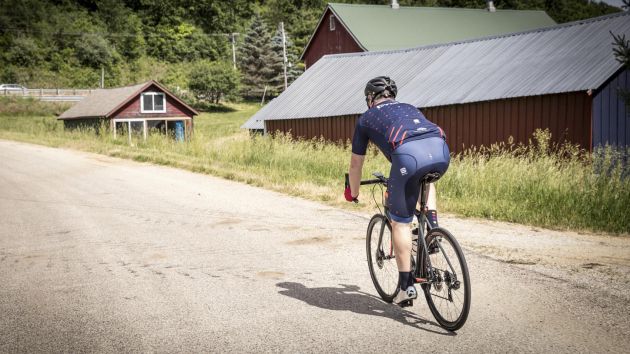
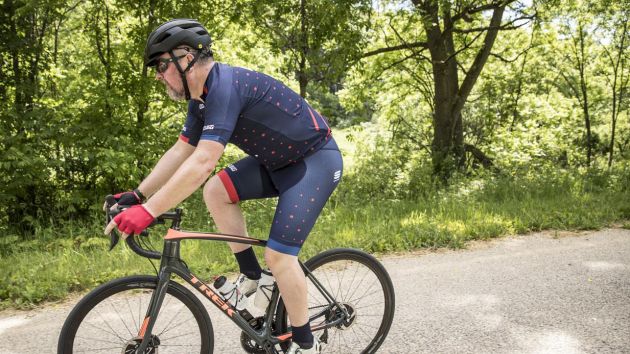
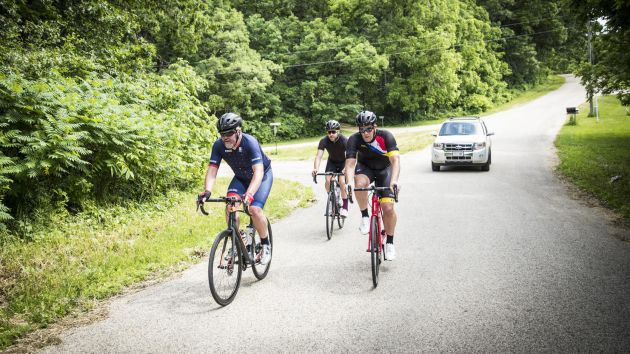
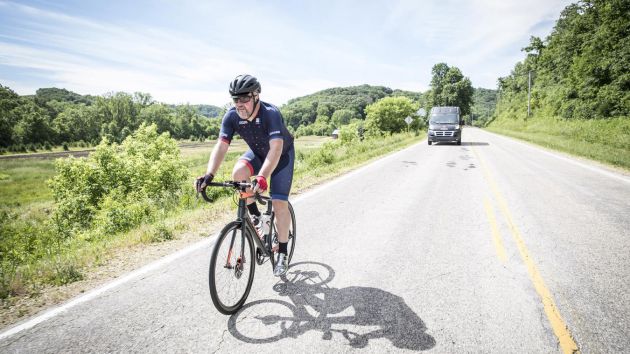
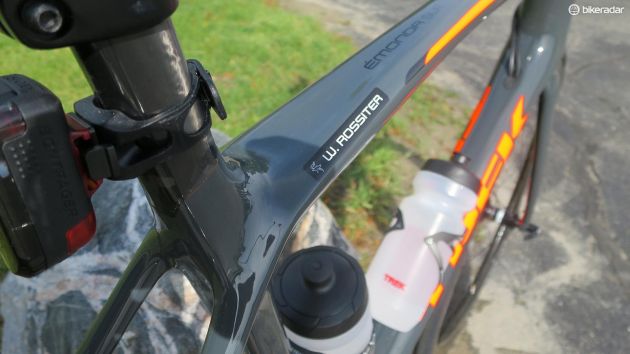
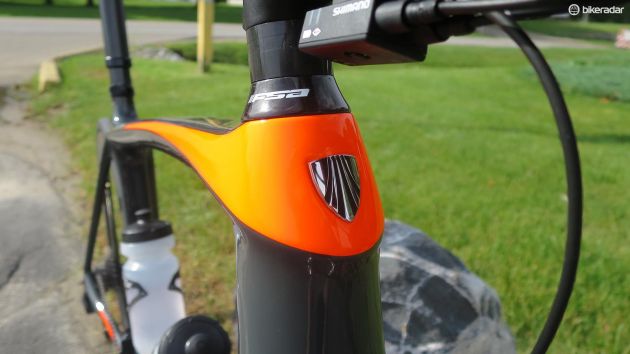
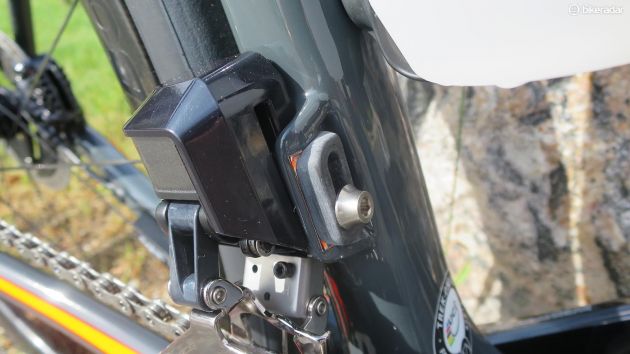
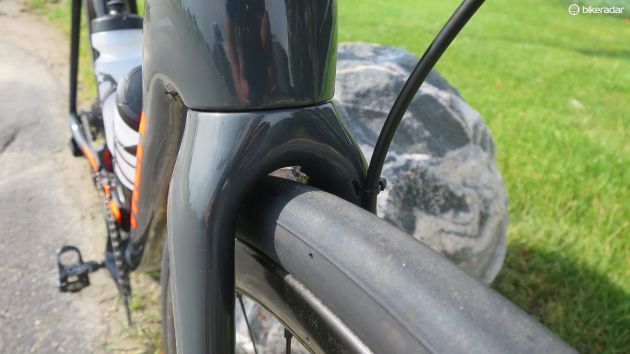
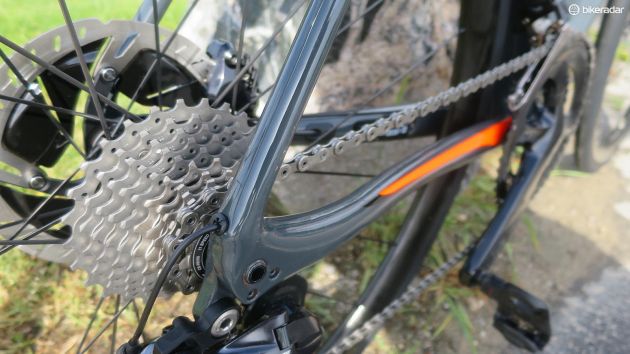
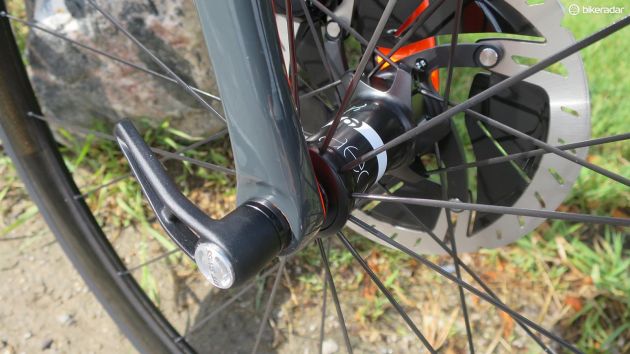
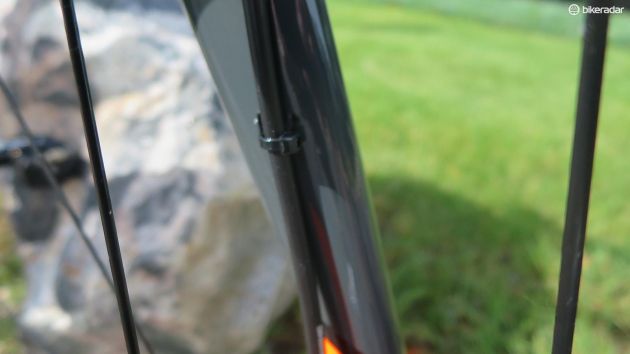
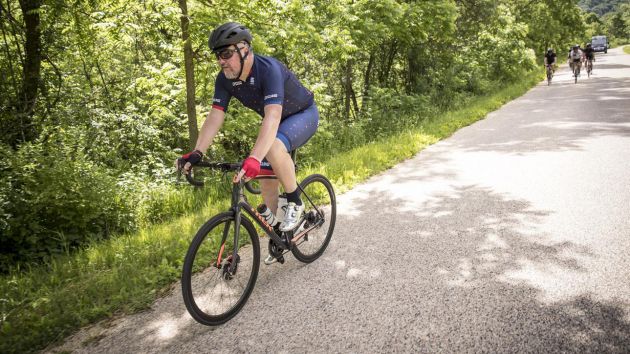
This article originally appeared on BikeRadar
The new Emonda's continuation of weight obsession doesn't end with the featherweight 644g-rim brake model. The disc version also leaves very little impression on the scales at 665g (that's a full 25g lighter than the old rim brake model). Add in a thru' axle equipped flat mount disc fork at 350g and that's a complete chassis at 1015g. Most of its disc-equipped competition is closer to that for the frame alone.
Trek Emonda SLR Disc specifications (NOT standard build):
- Price: N/A
- Size: 58cm
- Weight: TBC
- Frame: 700 OCLV series carbon 12mm thru' axle, flat mount disc (665g 56cm H1 fit)
- Fork: 700 OCLV carbon 12mm thru' axle, flat mount disc (350g)
- Gears: Shimano Dura-Ace Di2 9170 disc
- Brakes: Shimano Dura-Ace R9170 disc
- Wheels: Bontrager Aeolus Pro 3 TLR disc wheels
- Tyres: Bontrager R4 28c
- Stem: Bontrager Blendr
- Bars: Bontrager XXX carbon
- Saddle: Bontrager Montrose
- Seatmast: Trek carbon
The SLR disc I got to ride over a few days in Wisconsin isn't part of the SLR range; it's a product of Trek's custom Project One department.
Unlike Trek's other top-level carbon bikes (the Madone and Domane) this one isn't constructed in Waterloo Wisconsin. It's the first top-OCLV grade carbon frame it has produced overseas, but the frames arrive in Wisconsin and are prepped and painted in the Trek custom paint shop, and prepared in the adjoining Race shop.
My 58cm test bike came equipped with a carbon railed Montrose saddle, XXX carbon bars, Blendr stem, and the new Aeolus Pro 3 TLR carbon clincher wheels. The drivetrain duties are handled by Shimano's latest Di2 incarnation 9170 with its debuting Dura-Ace disc calipers and radical new cooling rotors.
The frameset will look familiar to fans of the old Emonda. Aside of course from the addition of discs, it's certainly a case of evolution rather than revolution here.
For weight saving measures the front brake hose is routed through slots and zip ties rather than internally as most disc road bikes do. We can see how the weight can be trimmed this way, but I can also see some of the roadie community seeing it as just a bit unfinished or - dare we say it - a bit mountain bike.
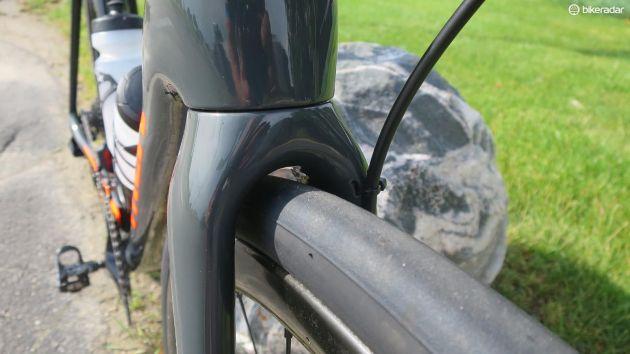
The front disc brake hose is fixed to the fork leg via slots and zip ties, rather than a heavier internally routed system
As part of the Project One experience you get to be fitted for the bike, with Trek's unique saddle pressure mapping playing an important part of the process.
Through the fitting we did make some tweaks to my standard setup, with the saddle coming forward a little on the rails (5mm), and dropping down by 8mm. Up front a few spacers were removed to bring the stack height down and my stem length upped from a 110 to a 120mm.
The effect this had on my saddle pressure readings was marked, completely removing any hot spots. It's a fascinating process, and I'll certainly be implementing the same changes on my own bikes. That the fitting service comes as part of the Project One buying experience is impressive and something I'd certainly recommend (if you can afford the cost of entry).
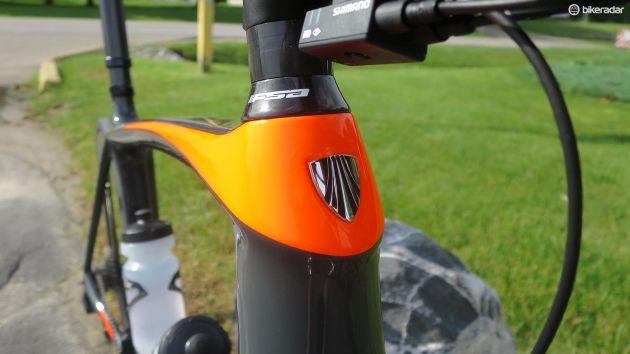
The new Emonda SLR is available in both H1 and H2 fit
Riding the Trek Emonda SLR Disc
Out on the road the Emonda feels light, with an acceleration pick-up that's oh-so-impressive, and a smooth, firm ride that's helped by big volume 28mm tyres. The fact that Trek has managed to keep the exact same geometry as the rim brake model (itself the same as the previous generation Emonda) means the bike feels familiar and familiarly confident.
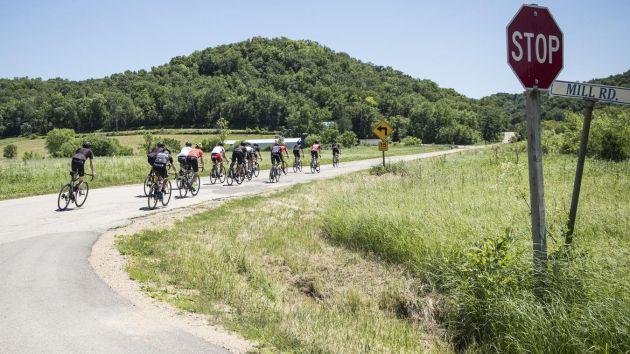
With a frame at 665g and a fork at 350g the Emonda SLR9 Disc is a seriously light bike
I always liked the previous Emonda, though I did find that the front end could feel a little firm and unforgiving especially over poorer road surfaces pushing plenty of buzz into your hands which led to a bit of finger tingling numbness.
This new disc model, however, is a big improvement. Yes, the front end still feels firm, and resolutely flex-free when honking on the hoods on the climbs or sprinting and descending whilst down in the drops.
The big difference is the lack of buzz, - a big part of that is going to be down to the increased volume in the tyres, but Trek's claim that the new fork's construction allows for more fore-and-aft flex certainlyseems to be bearing fruit.
Out back the Montrose saddle is a nice place to spend your time, well shaped, with minimal yet ample padding. it looks very understated, but that hides a well-thought-out perch.
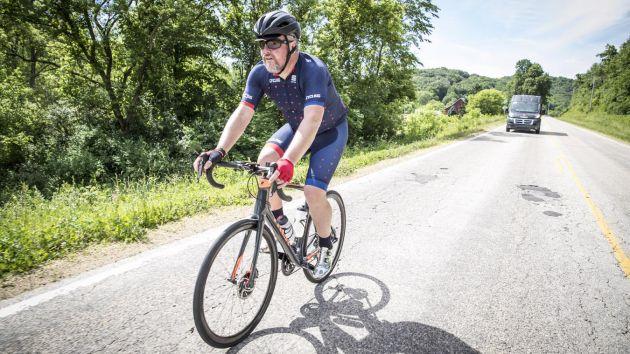
With temperatures hitting the mid 30s we were glad to have 11-28 cassettes when it came to the climbs
Like the front, the back also feels firm. It's certainly stiff as no amount of mishandling could get the rear disc rotor to do anything but go about its job without any rubs, ticks or errant noise.
The Emonda does, however, get choppy through the seat when rolling quickly over rutted road surfaces, but if you were looking for a bike that cosseted your hindquarters from the Trek stable then you're more of a Domane customer than an Emonda one.
The latest Dura-AceDi2 impresses. Its shifting can now be automated to shift the front mech, or set to semi-auto (shifting two at the back when you shift the front to keep the jumps small), and the new brakes feel like a big step forward, too.
We only had one issue with the front brake ticking after a heavy braking stop on a damp road, but that disappeared after a couple of miles, and didn't return through the rest of the days ride (or the whole of the following days riding).
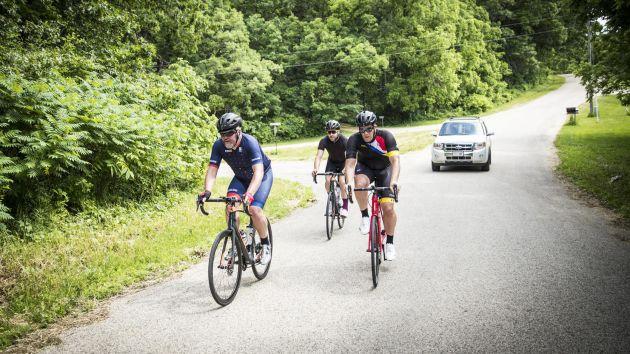
The Dura-Ace disc rotors had some initial ticking noises after an unseasonal downpour, but soon settled down to quiet noise free operation
Trek Emonda SLR Disc early verdict
As always it's hard to judge a bike like the Emonda on unfamiliar territory (though the roads we rode weren't what you'd call glass smooth). It feels very much like Cervelo's new R5 I tried recently in the way it handles and the ride dynamics. Its fast, brilliantly agile, has a balanced lightness that makes it a joy to descend on, and it'll be your new best friend on the climbs. too.